
Earlier, I posted about our new pigs – they’ve been in a roomy pen while we figured out what kind of fencing setup would work to get them out in the pasture. We knew from earlier encounters (like when we first tried to move Mama from the car to the barn and she ran out of her crate a few feet onto grass, which she immediately began grazing) that secure fencing is imperative. With some research, planning, and equipment purchases, they’re now all set to do rotational grazing on pasture.
As we considered the type of fencing that would work for rotational grazing, we also observed how the pigs interacted with the welded wire we initially used for their first “holding” pen. Mama quickly began to push the bottom of the wire up with her nose, causing us consternation (and resulting in more t-posts being added to prevent pushing up the wire). The piglets did less pushing against the wire, though they did create some small depressions under it by rooting at the fence line.
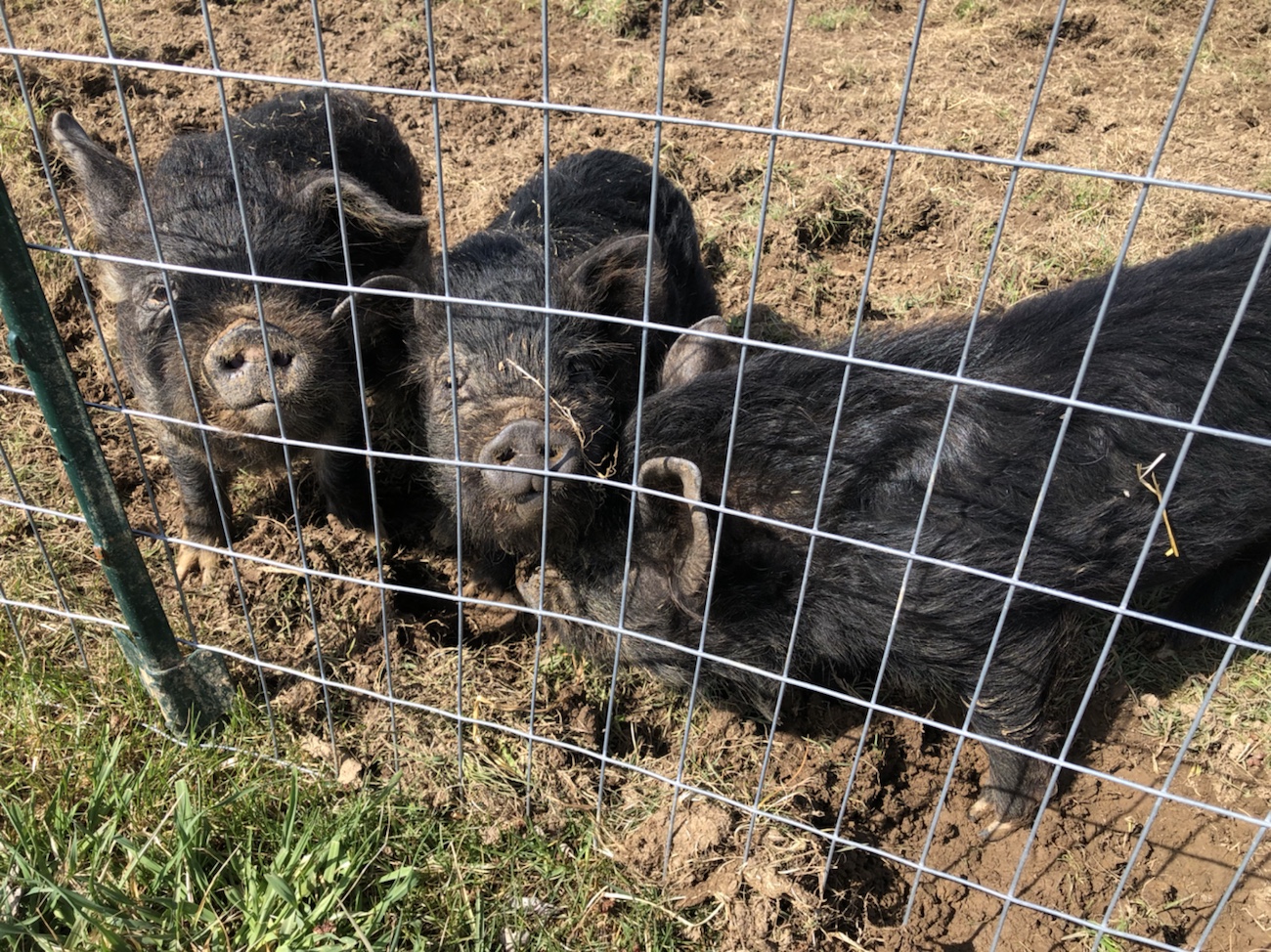
So…welded wire was out. Research indicated that many people who pasture their pigs, especially smaller breeds like KuneKune, train them to electric fencing. Having no previous experience with electric fencing, we immediately began to educate ourselves on how it works and the options. We landed on using poly rope and fiberglass posts to create the electric fence, and after buying the solar low-impedance energizer, the poly rope, ground rod, rubber gate handles, and the fiberglass posts, we were ready to set up the “training” fence.
The training fence was actually a fence within a fence: a 36″ tall welded wire barrier was erected first, and the 2-strand electric fence went inside of it. Once it was all set up, we tested the strung lines to ensure that they were, indeed, hot…at which time it became clear that the fence tester wasn’t working. Back to the farm supply store, hurrah. After buying a digital fence tester (at roughly twice the cost of the first one), we were able to determine that the electric fence was working and that the charge was consistent at different points in the lines.

After turning off the energizer, we lured the pigs into the enclosure with food (because they’re very motivated by snacks) and then turned it back on. Are you thinking this sounds like a dirty trick? It’s not – pigs on the loose can be destructive, so the only way this group can enjoy the good life on pasture is if they actually stay where they’re supposed to. Wondering what happened after the pigs started exploring their new digs? Yes, they did touch the fence, and yes, they got zapped. Mama was the first, and she let out a little yelp after nosing it and ran away from it. The babies sidled up to the fence, causing me to wonder if they weren’t going to activate it, until they touched it and found out that it’s unpleasant if you get too close. These are smart creatures, though, and they didn’t test the fence much after the first few times.
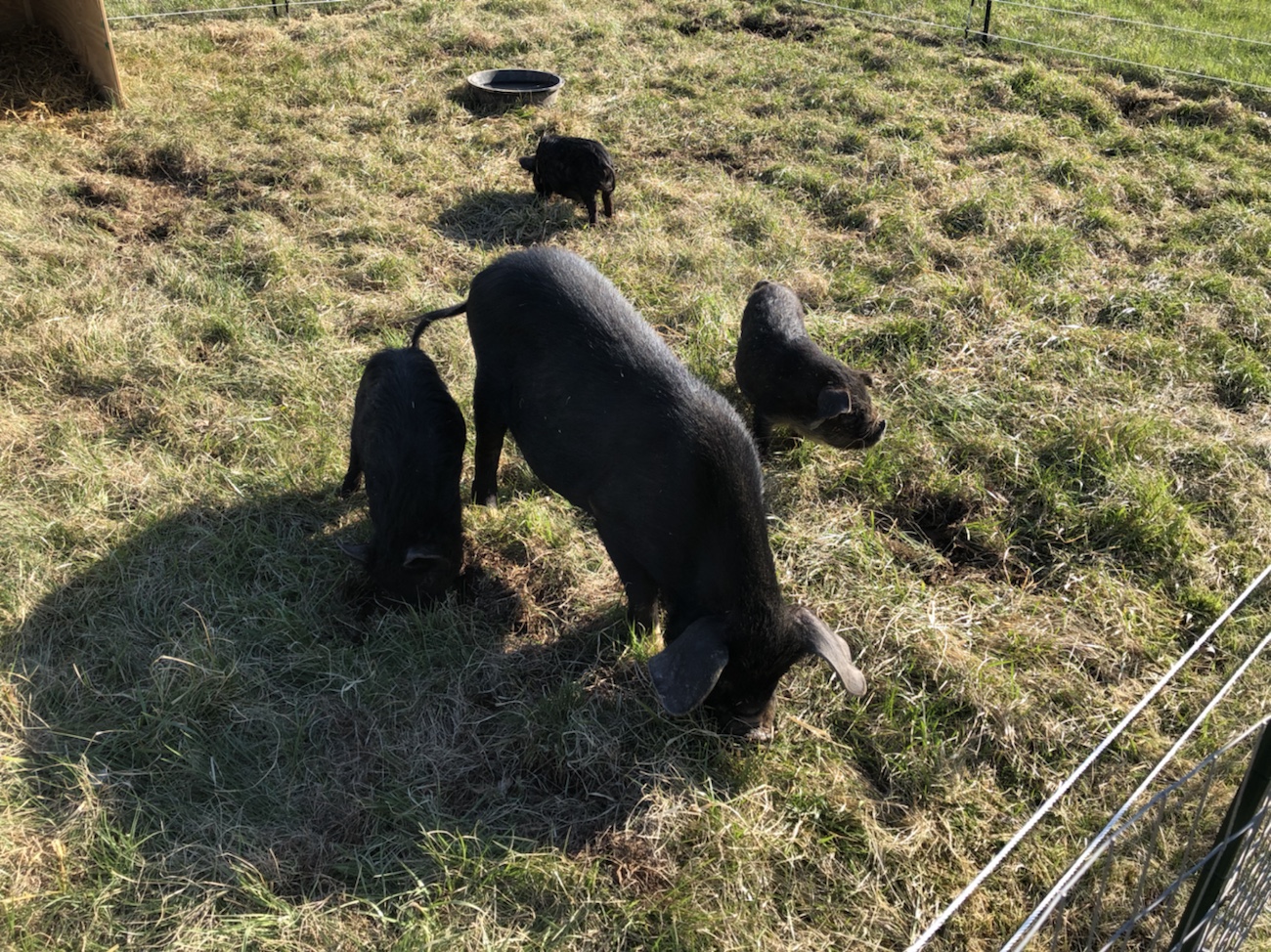
Since the pigs are out in open pasture now, they needed an appropriate shelter from the elements, too. We were able to repurpose (again!) parts of the chicken brooder to provide the structure for the 3-sided shelter, and we already had some metal roofing pieces that we had purchased some time ago for a different project that was deferred. After some fancy carpentry work by Mr. fMf, the pigs had a sturdy shelter that was still light enough for the two of us to move as we move their paddocks to new ground.
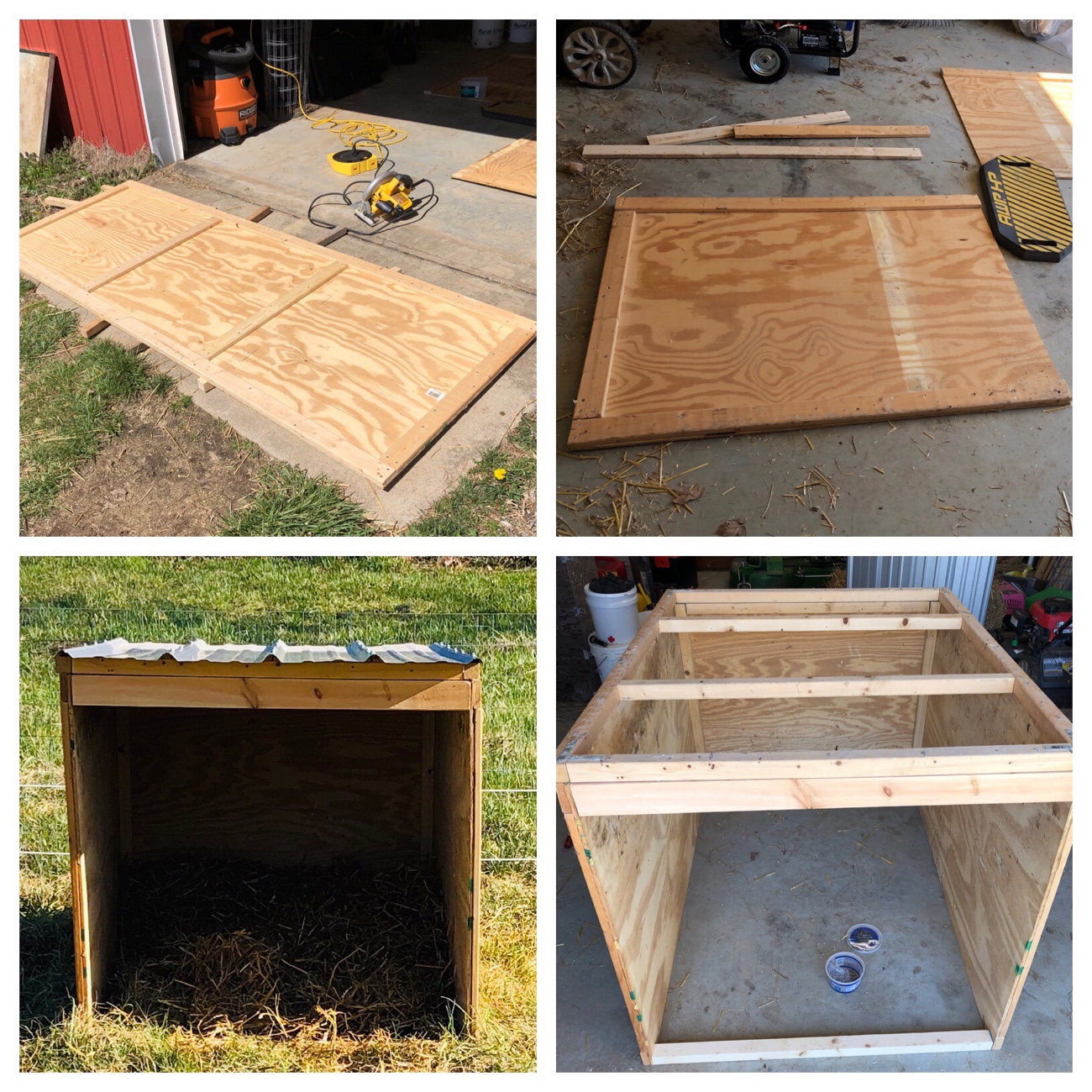
Though the grass is pretty thick where we sited the shelter, we also added a generous amount of straw because they like to dig themselves down into it (we frequently see them covered in straw after a nap because they’re buried themselves in it).
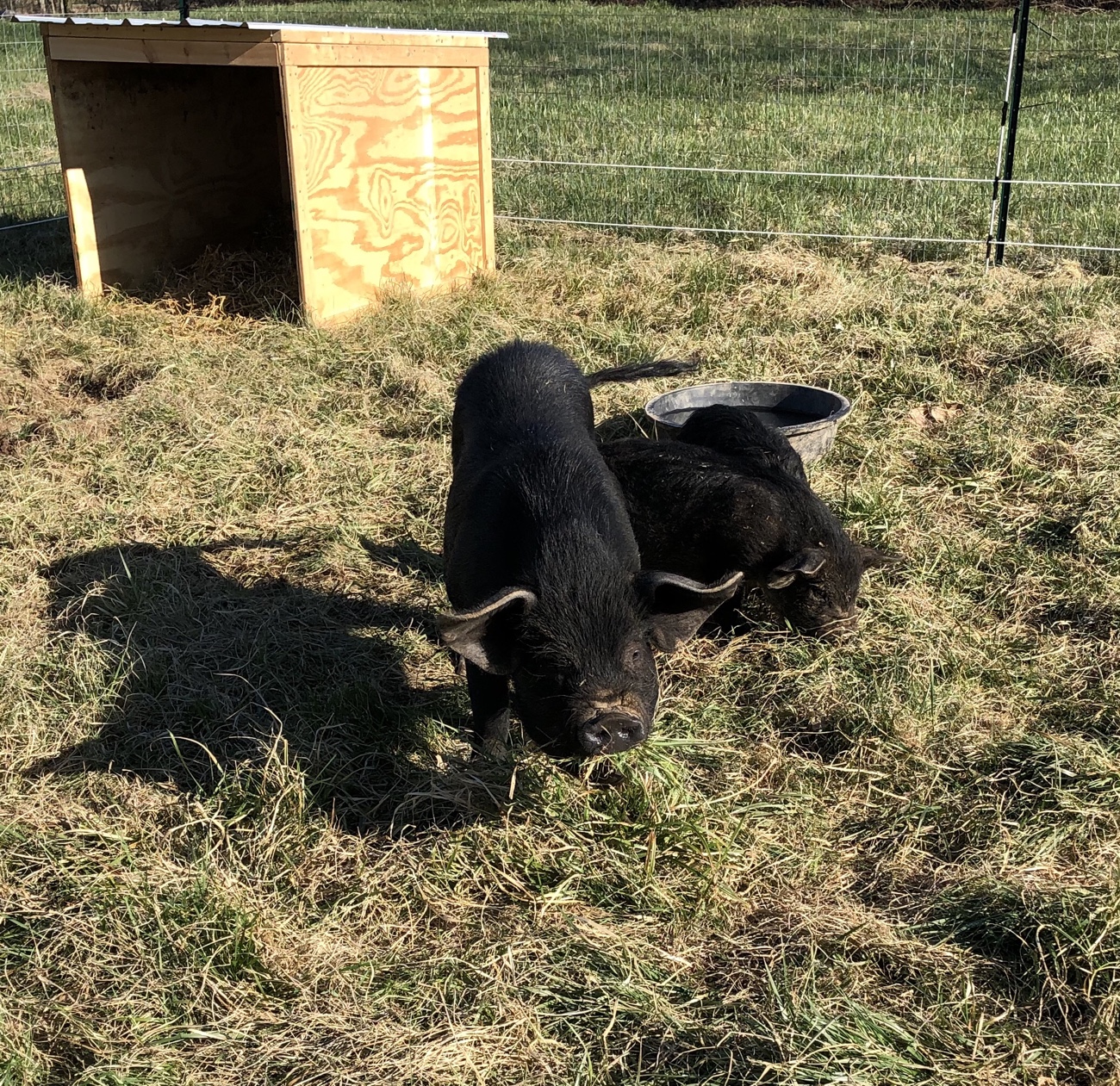
The happy quad has enjoyed long naps in the sunshine, lots of grass, and supplemental fermented feed (and their evening snack of fruits and veggies…because why should the dogs be the only ones who get “dessert”?). When the pasture greens are at peak lushness and nutritional content, we’ll cut back their supplemental feed, but until then, they enjoy feedings twice a day.
We’ve noticed that the smallest of the piglets, whom we assumed was a runt, has nearly caught up to his big sister in size. He was considerably smaller when he first came to us, but seems to be making up for lost time. The pigs’ coats are shiny and they seem more hydrated now. And, perhaps most importantly, they’re staying put.
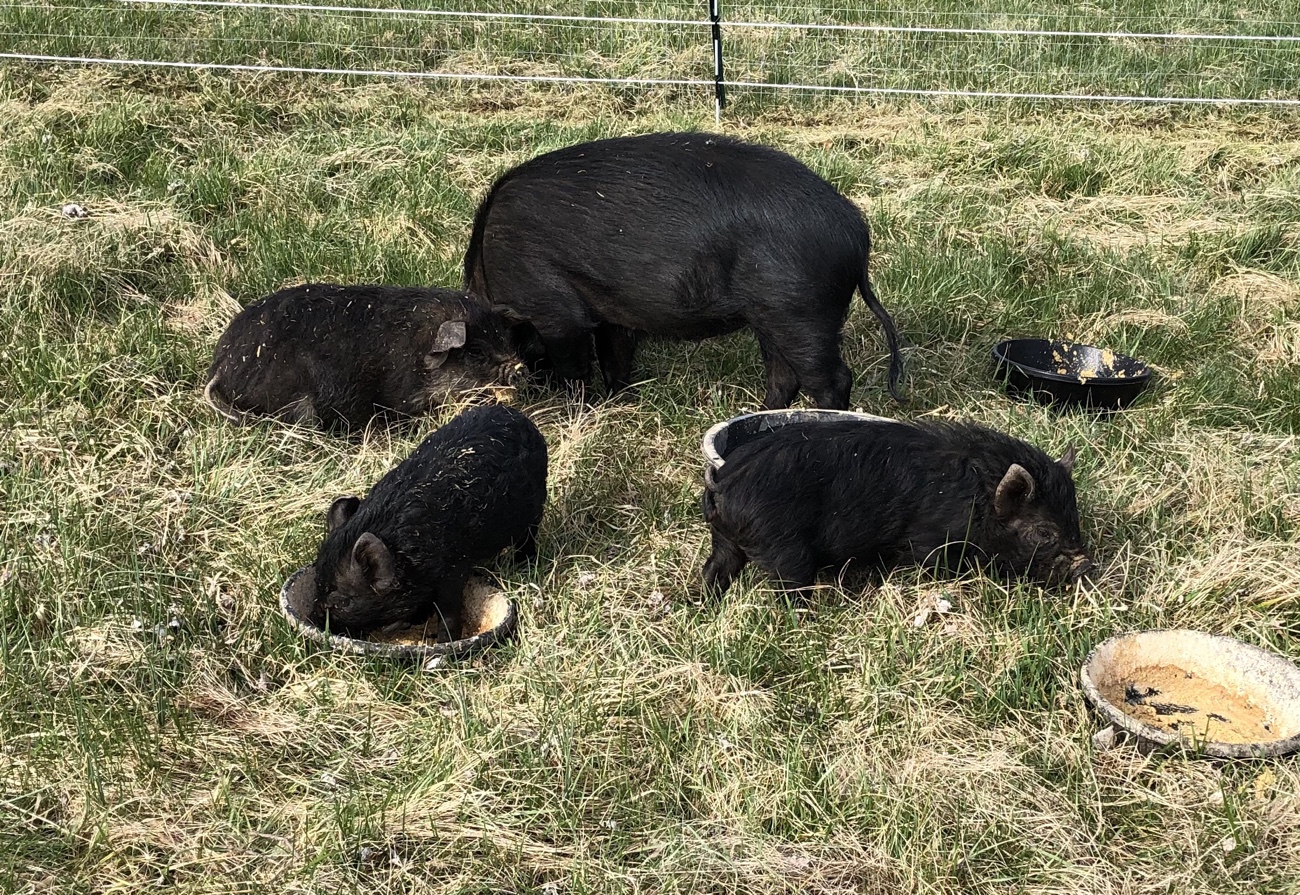
More updates to come on the pastured Kune-shans!
